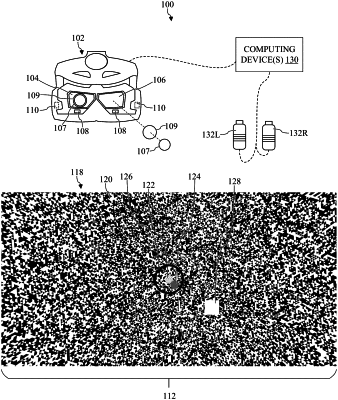| CPC A61B 3/024 (2013.01) [A61B 3/0025 (2013.01); A61B 3/0041 (2013.01); A61B 3/113 (2013.01); A61B 2562/0219 (2013.01)] | 20 Claims |

|
1. A method for performing an ON-OFF perimetry visual field test, the method comprising:
directing a patient to visual focus on an eye fixation region depicted in a visual field, the visual field projected to the patient via at least one display of a display apparatus, wherein the visual field is divided into a right side and a left side;
generating a plurality of stimuli in the visual field to be visually detected by the patient;
wherein directing further includes:
providing the patient with a first remote and a second remote, each of the first remote and the second remote in electronic communication with at least one computing device in electronic communication with the display apparatus;
directing the patient to engage the first remote in response to the patient visually detecting a stimulus of the plurality of stimuli being generated in the left side of the visual field; and
directing the patient to engage the second remote in response to the patient visually detecting the stimulus of the plurality of stimuli being generated in the right side of the visual field;
providing the patient a predetermined period of time to engage one of the first remote or engage the second remote in response to visually detecting the stimulus of the plurality of stimuli;
directing the patient to indicate when the patient visual detects each stimulus of the plurality of stimuli depicted within the visual field; and
analyzing the patient's indications to diagnose at least one of a retinal disease, a visual cortex disease, or a deficit condition of an eye of the patient.
|